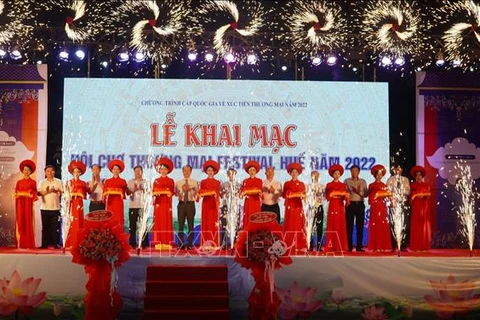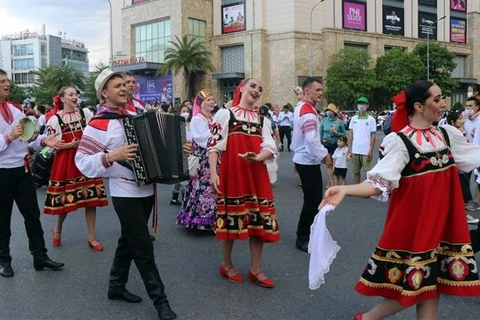Thua Thien-Hue (VNA) – As one of the country’s three largest traditional markets, Dong Ba market in Hue city in the central province of Thua Thien-Hue is making efforts to further promote its fine tradition to turn itself into an attractive destination for tourists.
Like Con Market, Dong Ba is a symbolic market of Hue city, the land of the royal citadel. A visit tothe Dong Ba market is a “must” for tourists when coming to the ancient city. It is one of the most famous and oldest markets in Hue offering specialties from the central region.
Lying on the north bank of Huong River and around 100 metres to the north of Truong Tien Bridge, the Dong Ba Market was completed in 1899 under the reign of King Thanh Thai (1889-1907).
It first opened 120 years ago, stretching from the iconic Trang Tien bridge to Gia Hoi bridge, covering more than 47,000 square metres. One side of the market is the romantic Huong River, while the main road is on Tran Hung Dao Street.
Having undergone several restorations and repairs, the 100-year-old market retains its architectural and cultural features and attracts many tourists at home and abroad.
The market houses more than 2,700 stalls of about 1,800 business households. About 60 categories of goods from high-end to popular standards are traded, creating jobs for thousands of labourers.
As a market with a large volume of goods, it is crowded and bustling every day from morning until evening.
This place seems to offer something for everyone. There is an area for vegans with affordable dishes and a place for those with a sweet tooth. Local women also come here for some of the best spices around.
If one comes to visit the market on the first day or the fifteenth day of the lunar month, they would be in awe by the flower corners and aromas of incense for worshiping.
Visitors can also find local specialties to bring home as souvenirs, including dried lotus seeds and sweets.
The Dong Ba market also has some of best foods of Hue, including com hen (rice with mussel), banh bot loc (steamed dumplings made of manioc flour with shrimp and pork filling), bun bo Hue (noodle soup of Hue style). The market also features banh ram it (glutinous rice pancake), cha bo (beef paste), keo me xung (sticky candy made from malt and sesame), and Thanh Tra fruit or the so-called che (a dessert with various toppings of banana, lotus seed, green bean, or ginger).
Visitors can enjoy products imbued with the culture of the ancient capital, such as royal tea, non bai tho (conical hat inscribed with one or two verses), sesame candy, fish sauce and dried lotus seeds.
Visitors can pick up some conical hats from the craft village of Phu Cam, steel and iron farming tools from Hien Luong blacksmith village, items of Ke Mon blacksmith village, pottery products from Phuong Tich or mats made of bamboo from Bau La Village.
The booths selling fermented shrimp and shredded pork are also worth a visit.
The most colourful corner of the market is where local residents sell vegetables – different types of fresh herbs, bamboo shoots, gourds and figs.
Hue is synonymous with conical hats and ao dai (traditional long dress) and Dong Ba is the best place to buy them.
Put on your ao dai, wearing a conical hat and get out your mobile phone as there are selfie spots aplenty in Hue, so lets go.
Visitors are recommended to go to the market from 3pm as that’s when many of the food booths come alive.
Even in the period of integration and development with fierce competition against supermarkets and large trading centres, the Dong Ba market still holds a special position in the hearts of every Hue resident that cannot be replaced.
The Dong Ba market is like a miniature Hue within a Hue, and visiting will help you find many specialities and understand the traditional beauty of the former royal capital city./.


























